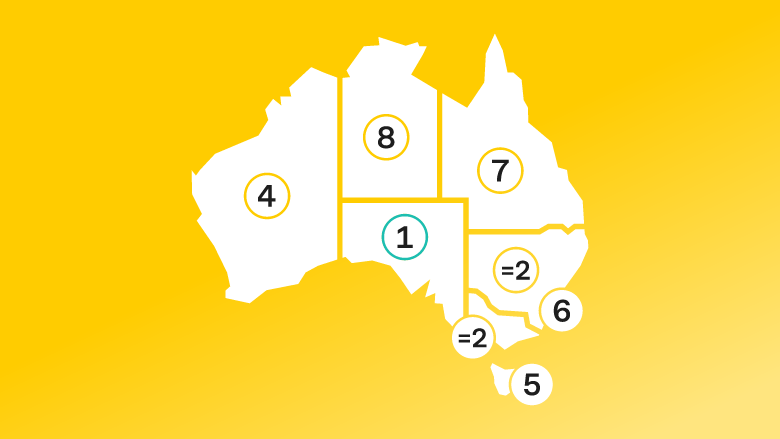Victoria remains in third place with the ACT in fourth position. The previously equal fourth-placed states of Queensland (now fifth), Tasmania (now sixth) and NSW (now seventh) all dropped down the leaderboard. The Northern Territory remains in eighth spot.
“Across the country, the economic performance of Australia’s states and territories is being supported by both strong employment and population growth, at a time of higher-than-desired price inflation,” said Ryan Felsman, Senior Economist at CommSec.
“South Australia’s continued high-ranking is being driven by a solid job market and construction activity.
“While South Australia retains first place, Western Australia is seeing the strongest annual economic momentum, so it will be interesting to see how this plays out in the coming quarters.”
“New South Wales, Tasmania and Queensland slipped down the rankings this quarter. Generally speaking, state economies have slowed as consumers respond to higher borrowing costs and price pressures. The future economic path will be dependent on the resiliency of the job market and interest rates,” said Mr. Felsman.
State and territory highlights from the report include:
- South Australia ranked first on three indicators, including dwelling starts, construction work done and unemployment. But the economy has lost momentum in recent months due to weaker consumer and business spending.
- Western Australia ranked first on relative population growth and home lending. “The West” has the strongest annual economic momentum and appears primed to challenge for top spot in the next survey.
- Victoria ranked third on three of the eight indicators, while coming second on retail spending.
- The ACT ranked first on economic growth, retail spending and equipment investment, but is held-back by lower rankings for the remaining indicators.
- Queensland is ranked fourth on four indicators, but its strong labour market is supporting economic growth.
- Tasmania comes second on two indicators, but housing activity has slowed recently.
- NSW has solid population growth, but retail spending is being pressured by higher borrowing costs.
- The Northern Territory is ranked eighth on six indicators, but retail spending has held-up solidly over the past year.
In addition to relative economic performance, the latest report also analyses annual growth rates across the eight economic indicators, revealing that Western Australia and Queensland are now in joint first place on this measure of economic momentum, followed by the ACT and Victoria in third and fourth place, respectively.
About the CommSec State of the States Report
The State of the States report uses the most recent economic data available, however while population growth data relates to the December quarter 2023, other data – such as unemployment – is much timelier, covering the month of June 2024 with housing finance figures covering May 2024.
CommSec, the online broking arm of Australia’s largest bank, assesses the performance of each state and territory on a quarterly basis using eight key indicators. Those indicators include: economic growth, retail spending, equipment investment, unemployment, construction work done, population growth, housing finance, and dwelling commencements.
Just as the Reserve Bank uses long-term averages to determine the level of "normal" interest rates, CommSec compares the key indicators to decade averages; that is, against "normal" performance. CommSec also compares annual growth rates for eight key indicators for all states and territories, in addition to Australia as a whole, enabling a comparison of economic momentum.



